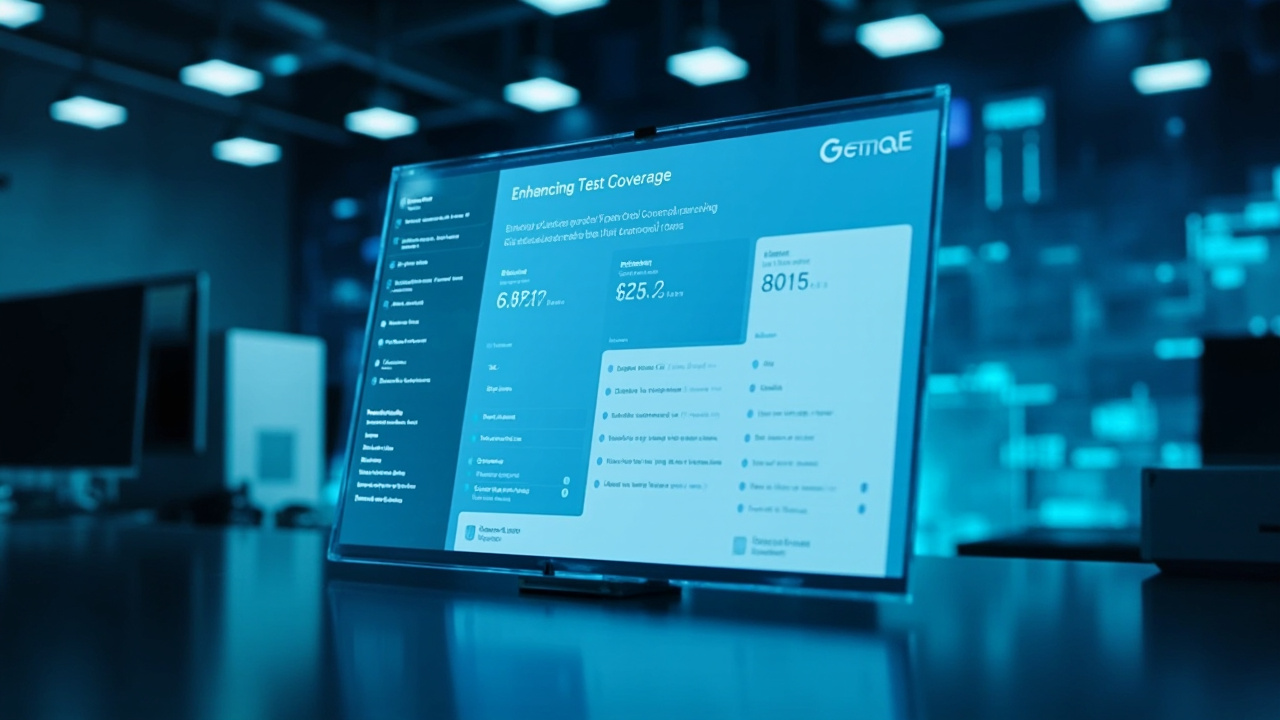In the rapidly evolving world of software development, quality assurance (QA) is more critical than ever. As applications become more sophisticated and user expectations rise, traditional software testing methods often fall short of ensuring robust performance and reliability. This growing complexity presents a significant challenge for development teams striving to release high-quality applications quickly and efficiently. In this article, we explore the current landscape of software testing, the pain points faced by QA teams, and how modern innovations are transforming the industry.
Software testing, once a relatively straightforward process, now encompasses a diverse range of methodologies and tools designed to address various aspects of application quality. From unit testing to integration testing, and from performance testing to user acceptance testing, each phase of the testing lifecycle plays a crucial role in delivering a seamless user experience. However, as applications grow in size and complexity, traditional testing approaches are increasingly inadequate. Manual testing, in particular, is time-consuming and prone to human error, while automated testing often struggles to keep pace with rapid development cycles.
Amidst these challenges, innovative solutions powered by artificial intelligence (AI) are emerging as game-changers in the field of software testing. By leveraging machine learning algorithms and advanced analytics, these tools offer unprecedented levels of efficiency and accuracy, enabling QA teams to identify and address defects more effectively. One such tool is GenQE, a cutting-edge AI-powered platform that revolutionizes test automation and quality assurance processes. But how exactly do these innovations work, and what tangible benefits can they offer to development teams?
Understanding the Core Challenges in Software Testing

Before delving into the solutions, it is essential to understand the core challenges that software testing teams face today. From managing increased complexity to meeting tight deadlines, these hurdles are significant.
The Complexity Conundrum
As software systems become more intricate, the complexity of testing them increases exponentially. This is not just about the number of lines of code but also about the interconnectedness of components and the variety of environments in which applications must operate. Testing teams must ensure that each component functions correctly both in isolation and as part of the whole.
The complexity is further compounded by the need to test across multiple platforms and devices. With users accessing applications via web, mobile, and desktop interfaces, ensuring consistent performance across all platforms is a monumental task. Consider an e-commerce application which must function seamlessly whether a user is shopping on their smartphone or desktop computer. The underlying code must support various operating systems and device specifications, each with its unique quirks.
Time Constraints and Agile Demands
The shift towards Agile and DevOps methodologies has drastically reduced software development cycles. While these approaches offer numerous benefits, they also impose significant pressures on testing teams to deliver results quickly. In a fast-paced environment, finding a balance between speed and quality becomes a critical issue.
Frequent releases mean that testing cannot be a bottleneck. Yet, without thorough testing, the risk of releasing buggy or insecure software increases, potentially leading to severe repercussions in terms of user trust and brand reputation. In a competitive market, a minor defect in a production application can lead to significant financial losses and damage to brand credibility.
Resource Limitations
Testing teams often operate with limited resources, both in terms of personnel and budget. The need to do more with less is a common refrain in the industry. This scarcity means that teams must prioritize their efforts, often focusing on the most critical areas at the expense of comprehensive testing.
“The greatest challenge in software testing is balancing thoroughness with speed. In today’s landscape, both are non-negotiable.”
In such environments, tools like GenQE can offer significant value. By streamlining processes and automating mundane tasks, these tools allow teams to reallocate resources to more strategic areas, ensuring that critical functionalities are thoroughly tested without overstretching available resources.
The Role of Automation in Modern Testing

Automation has been heralded as a solution to many of the challenges facing software testing teams. By automating repetitive tasks, teams can free up valuable resources and focus on more strategic activities.
The Basics of Test Automation
At its core, test automation involves using software tools to execute pre-scripted tests on a software application before it is released into production. These automated tests can range from simple unit tests, which verify the smallest parts of the application, to complex UI testing scripts that mimic real user interactions.
Automation can significantly speed up the testing process, allowing for faster feedback and reducing the time to market. Automated tests can be run multiple times with minimal additional cost, making them ideal for regression testing a critical component of any Agile or DevOps pipeline. By ensuring that new code changes do not negatively impact existing functionality, regression testing helps maintain software quality over time.
Overcoming Automation Challenges
Despite its benefits, automation is not without its challenges. Creating and maintaining automated test scripts requires a certain level of expertise, and if not managed correctly, these scripts can become brittle and difficult to maintain. Changes in the user interface or application logic can render scripts obsolete, requiring frequent updates that consume time and resources.
This is where innovations like GenQE come into play. By leveraging AI, GenQE can automate the creation and maintenance of test scripts, reducing the manual effort required and improving the resilience of automated tests. Its self-healing capabilities ensure that tests remain operational even as the application evolves. GenQE’s ability to adapt to changes in real-time minimizes the need for human intervention, significantly reducing maintenance costs.
The GenQE Edge in Automation
GenQE’s AI-driven test generation and smart execution capabilities take automation to the next level. By analyzing software requirements and user behavior, GenQE can generate test cases that are highly relevant and comprehensive. It intelligently prioritizes tests based on risk, ensuring that the most critical areas are tested first.
“With AI-driven automation, testing is no longer just about efficiency; it’s about strategic precision.”
By integrating GenQE into their workflows, testing teams can achieve a higher degree of accuracy and efficiency. The platform’s ability to learn from past data and adapt to new scenarios makes it an invaluable asset in maintaining software quality.
Enhancing Test Coverage with AI-Powered Tools

One of the perennial challenges in software testing is ensuring comprehensive test coverage. With limited resources, achieving full coverage can seem like an unattainable goal.
Defining Test Coverage
Test coverage refers to the extent to which the software is tested, usually measured by the percentage of code executed by the tests. High test coverage means that more of the application has been tested, reducing the likelihood of undetected defects.
Achieving high test coverage is crucial, especially in complex applications with many interconnected components. However, it can be challenging to determine the most critical areas to focus on, particularly in large codebases. This is where AI-powered tools like GenQE offer a distinct advantage, providing insights into areas that require more rigorous testing.
AI’s Role in Expanding Coverage
AI-powered tools like GenQE can analyze code and identify areas that require testing, ensuring that no critical component is left unchecked. By leveraging historical data and user behavior insights, these tools can prioritize test cases that offer the greatest impact on software quality. This targeted approach not only improves coverage but also optimizes resource allocation, allowing testing teams to focus on areas that matter most.
Moreover, GenQE’s comprehensive test coverage extends across various platforms, including web, mobile, and APIs. This ensures that applications perform consistently across different environments, providing a seamless user experience. For instance, an application with both iOS and Android versions can benefit from GenQE’s ability to test across multiple operating systems, ensuring uniform quality regardless of the platform.
Practical Applications
Consider a scenario where a development team is working on a multi-platform application with both web and mobile components. Traditional testing methods might struggle to keep up with the different environments, leading to gaps in coverage. By integrating GenQE, the team can ensure that all platforms are thoroughly tested, minimizing the risk of defects slipping through the cracks.
“AI-powered tools are transforming test coverage from a daunting task into a strategic advantage.”
With GenQE, testing teams can achieve comprehensive coverage without overextending their resources, ensuring that applications are robust and reliable upon release.
Risk-Based Testing: Prioritizing What Matters

In an ideal world, every part of a software application would be tested thoroughly before release. However, in reality, time and resources are limited, necessitating a more strategic approach to testing.
The Principles of Risk-Based Testing
Risk-based testing involves prioritizing test cases based on the potential impact and likelihood of defects in different areas of the application. By focusing on high-risk areas, testing teams can maximize their efforts and reduce the chances of critical defects reaching production.
This approach requires a deep understanding of the application, its architecture, and its usage patterns. It also requires the ability to assess risk accurately and adapt testing efforts accordingly. In highly regulated industries such as finance and healthcare, risk-based testing is particularly crucial, as defects can have significant legal and financial implications.
Implementing Risk-Based Testing
AI-powered solutions like GenQE can enhance risk-based testing by providing detailed risk analysis and insights. By using machine learning algorithms, GenQE can identify patterns in test results and detect anomalies that might indicate potential defects. This allows teams to prioritize their efforts more effectively and focus on areas that pose the greatest risk.
For example, if a specific module of an application has historically been prone to defects, GenQE can allocate more testing resources to that module, ensuring its reliability before release. This targeted approach not only improves software quality but also optimizes resource allocation.
Real-World Example
Imagine a banking application that handles both standard transactions and high-risk functionalities like transfers and loan approvals. Risk-based testing would prioritize testing these high-risk areas to ensure their reliability. By using GenQE, the testing team can automatically generate test cases that focus on these critical functionalities, ensuring they are thoroughly vetted.
“In the realm of software testing, focusing on high-risk areas is not just smart; it’s essential for success.”
Through intelligent risk assessment, GenQE empowers testing teams to make informed decisions, ensuring that high-impact areas receive the attention they deserve.
The Future of Software Testing: AI and Beyond

As we look to the future, the role of AI in software testing is set to expand even further. The potential for AI to transform testing processes is immense, offering new levels of efficiency, accuracy, and adaptability.
The Evolution of AI in Testing
AI’s role in software testing is still in its nascent stages, but its impact is already profound. As AI algorithms become more sophisticated, the ability to predict and prevent defects before they occur will become a reality. This shift from reactive to proactive testing will redefine the landscape of quality assurance.
AI will also enhance the ability to simulate real-world user interactions, providing more accurate insights into how applications perform under various conditions. This will lead to more reliable and user-friendly applications that meet the ever-growing expectations of users. For instance, AI can simulate thousands of user interactions simultaneously, providing valuable data on potential bottlenecks and usability issues.
The Integration of AI with Emerging Technologies
The integration of AI with other emerging technologies, such as the Internet of Things (IoT) and blockchain, will further expand the scope of software testing. These technologies introduce new complexities and challenges that traditional testing methods are ill-equipped to handle.
AI-powered platforms like GenQE will play a crucial role in addressing these challenges, offering scalable and intelligent solutions that adapt to the evolving technological landscape. For example, as IoT devices become more prevalent, GenQE can facilitate testing across diverse hardware configurations, ensuring consistent performance.
The Path Forward
For organizations looking to stay ahead in the competitive software market, embracing AI-powered testing tools is no longer optional it s imperative. By integrating solutions like GenQE into their testing processes, teams can achieve faster time to market, higher accuracy, and reduced costs.
“The future of software testing is not just about adapting to change; it’s about leading it.”
As AI continues to evolve, its role in software testing will become increasingly central, driving innovation and setting new standards for quality and efficiency.
Conclusion: Embracing a New Era of Software Testing

In conclusion, the landscape of software testing is undergoing a significant transformation. The challenges of complexity, time constraints, and resource limitations are driving the need for innovative solutions that offer greater efficiency and accuracy. AI-powered platforms like GenQE are at the forefront of this revolution, providing the tools necessary to navigate the complexities of modern software development.
By embracing these innovations, testing teams can not only overcome current challenges but also position themselves for future success. The integration of AI into testing processes offers a strategic advantage, enabling teams to deliver high-quality applications that meet user expectations.
As software continues to evolve, so too must our approaches to testing. By leveraging the power of AI and embracing new methodologies, we can ensure that quality assurance remains a cornerstone of software development, driving innovation and excellence.
For those interested in exploring the potential of AI-powered testing tools, now is the time to act. Solutions like GenQE offer a glimpse into the future of software testing one where efficiency, accuracy, and adaptability are paramount.
“Embrace the future of software testing and unlock new possibilities for innovation and excellence.”
In this ever-evolving landscape, the key to success lies in staying ahead of the curve and leveraging the latest advancements in technology to maintain a competitive edge.
Discover More Innovative Solutions
Want to learn more about the tools and technologies discussed in this article? Explore how these innovations can be tailored to your specific needs and workflow requirements.
Our team of experts is available to answer your questions and provide personalized insights into how modern solutions like GenQE can address your specific challenges.
If the link above does not work, please visit: https://calendly.com/dm-csimplifyit/30min?month=2025-05